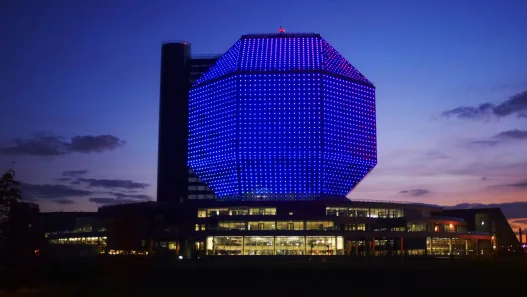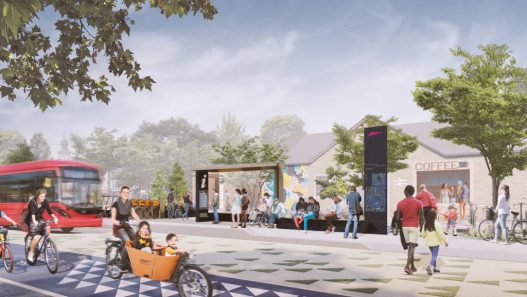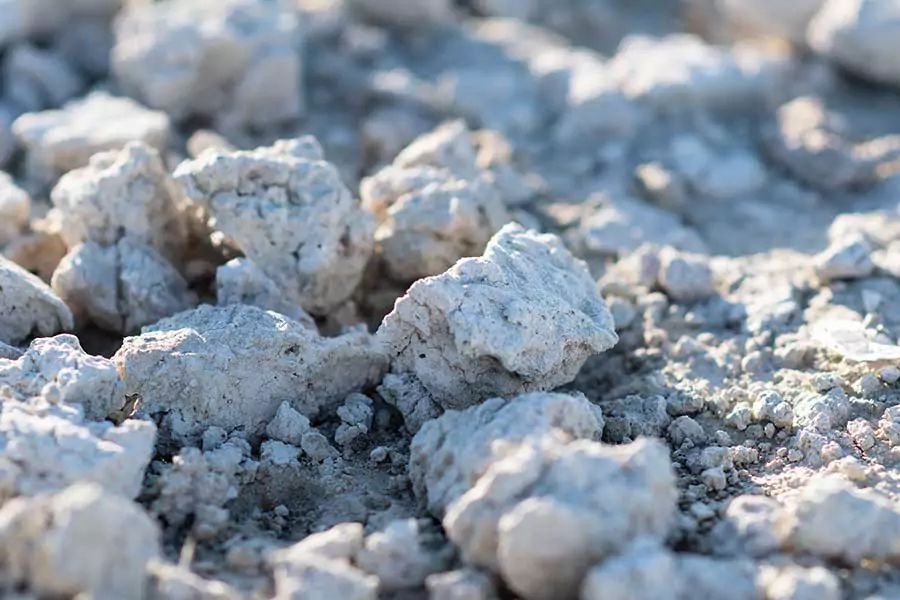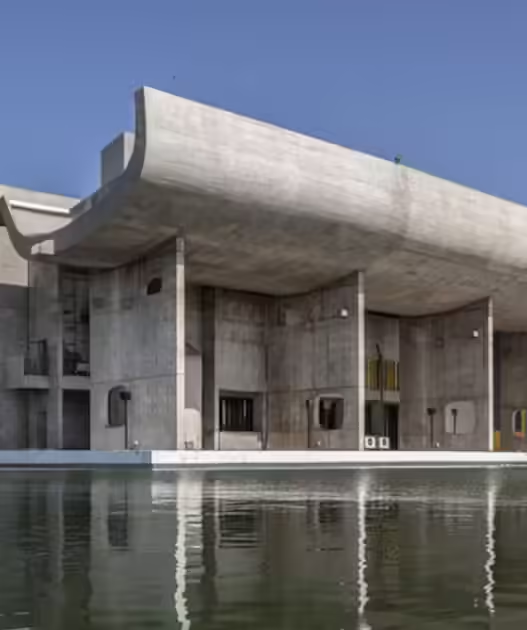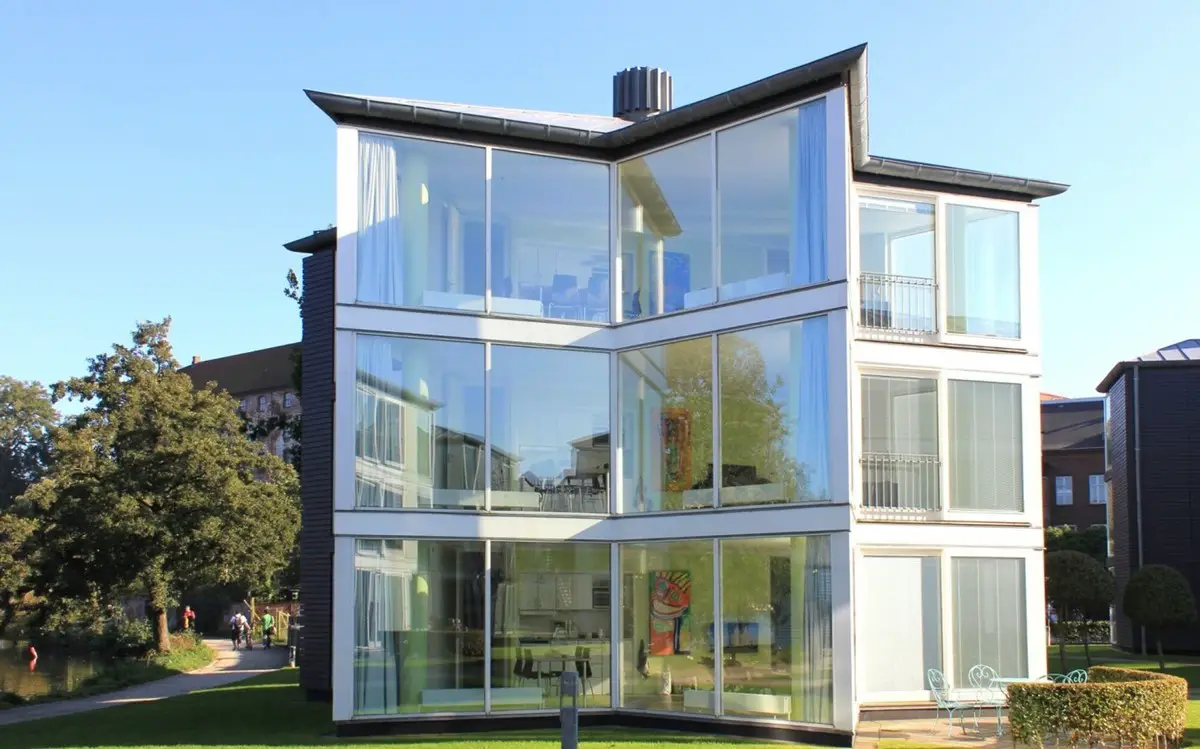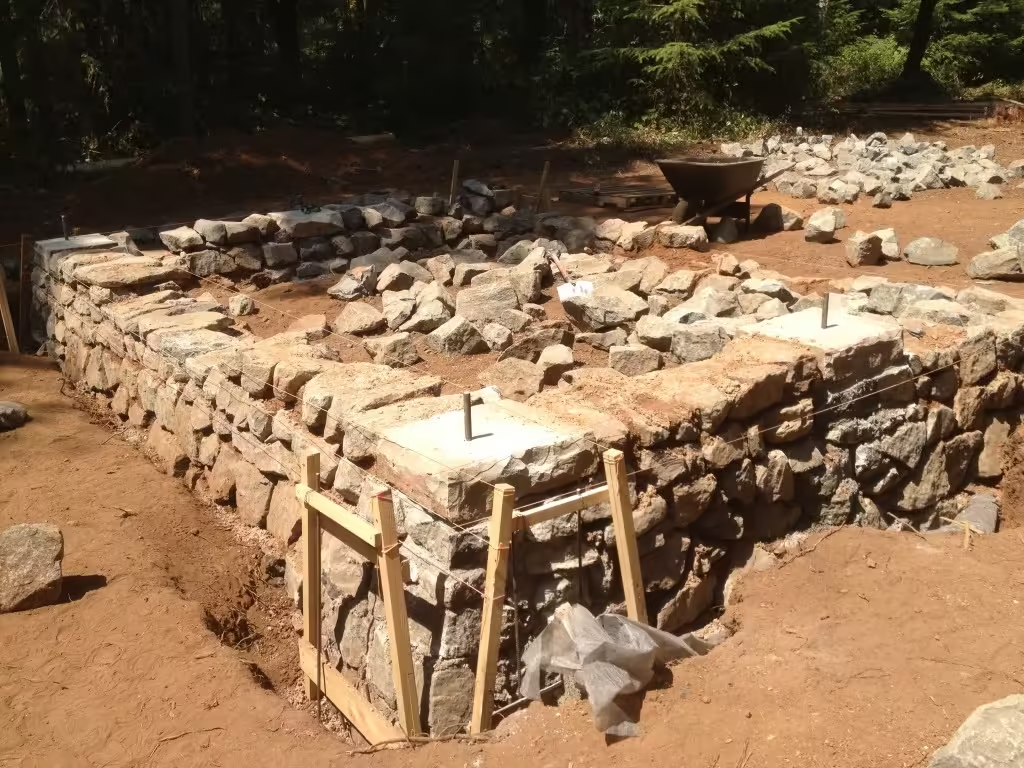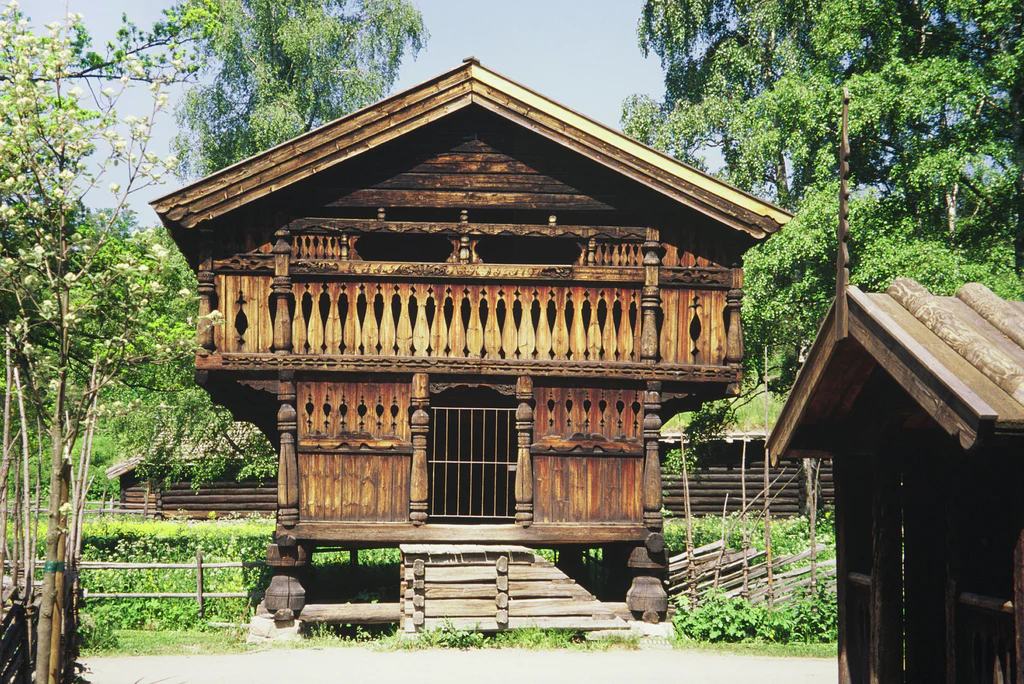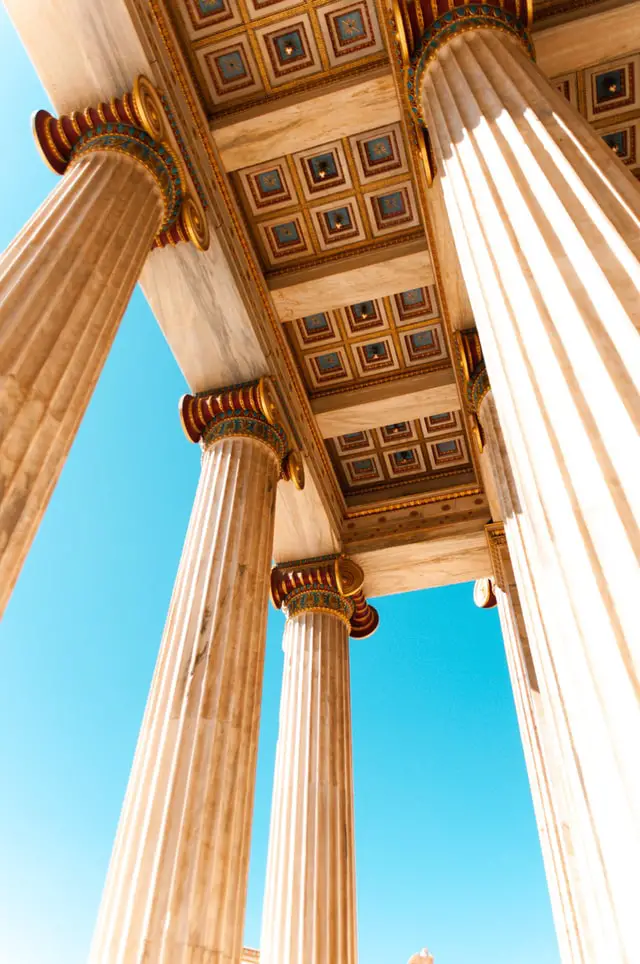A material as old as civilization itself, terracotta has fascinated architects and builders for thousands of years with its versatility, beauty and enduring qualities. From the majestic structures of ancient civilizations to the modern wonders of contemporary architecture, terracotta continues to inspire and shape the built environment.

Defining Terracotta: Composition and Properties
Derived from the Italian words “terra” (earth) and “cotta” (fired), terracotta is a fired clay material that has been used in construction and art for centuries.
- Composition: Terracotta is composed primarily of clay and is often mixed with other materials such as sand, silt and water. The specific composition can vary depending on the intended use and desired properties.
- Properties: Terracotta is known for its durability, versatility and aesthetic appeal. It is a naturally porous material, providing good thermal insulation and breathability. Terracotta is also fire and water resistant and can be molded into various shapes and sizes.
Historical Context: Use of Terracotta in Ancient Civilizations
Terracotta has a rich history dating back to ancient civilizations that recognized its unique properties and aesthetic appeal.
- Ancient Mesopotamia: Terracotta was widely used in ancient Mesopotamia for building materials, sculptures and decorative elements. Mesopotamia’s iconic Ziggurats were often built using terracotta bricks.
- Ancient Egypt: Terracotta was used in Ancient Egypt to make decorative tiles, figurines and funerary objects. The famous “Terracotta Army” of China’s first emperor Qin Shi Huang is a testament to terracotta’s enduring legacy in ancient art and architecture.
- Ancient Greece and Rome: Terracotta was a popular material in Ancient Greece and Rome, used for building materials, roof tiles and decorative elements. The iconic Parthenon in Athens features terracotta roof tiles, while Roman aqueducts and baths often used terracotta pipes and bricks.
The Cultural Significance of Terracotta: A Testament of Craftsmanship
Terracotta has a deep cultural significance, representing the art and craftsmanship of generations of artisans.
- Traditional Craftsmanship: Terracotta production involves skilled artisans who transform raw clay into beautiful and functional objects. This traditional craftsmanship has been passed down through generations, preserving the cultural heritage of terracotta.
- Regional Variations: Terracotta production often shows regional variations, reflecting the unique geological and cultural characteristics of different regions. This diversity adds to the richness and beauty of terracotta as an architectural material.
- Symbolism and Meaning: In different cultures, terracotta has been attributed symbolic meanings representing elements such as earth, fire and creation. This symbolism adds depth and meaning to the use of terracotta in architecture.
Understanding the Relationship between Terracotta and Architectural Aesthetics
Terracotta’s unique properties and aesthetic appeal have made it a popular choice for architects looking to create distinctive and impressive designs.
- Color and Texture: Terracotta has a wide range of colors and textures, allowing for creative expression and the integration of natural elements into architectural designs.
- Light and Shadow: The interplay of light and shadow on Terracotta surfaces creates a dynamic and captivating visual experience, adding depth and dimension to architectural spaces.
- Sustainability and Durability: Terracotta’s natural properties such as durability, fire resistance and thermal insulation contribute to sustainable and durable architectural designs.
Global Trends: The Resurgence of Terracotta in Contemporary Architecture
Terracotta is experiencing a revival in contemporary architecture with a renewed appreciation of its aesthetic appeal, sustainability and versatility.
- Modern Applications: Contemporary architects are using terracotta in innovative ways, incorporating it into facades, roofs, walls and interior design elements.
- Sustainability and Energy Efficiency: Terracotta’s natural properties such as thermal insulation and breathability make it a sustainable and energy efficient material for modern buildings.
- Architectural Expression: Terracotta’s versatility allows architects to create unique and expressive designs by incorporating its natural beauty and texture into contemporary architectural styles.
The enduring appeal of terracotta, combined with its versatility, sustainability and aesthetic qualities, ensures its continued relevance in the ever-evolving world of architecture.
Historical Uses of Terracotta in Architecture
Terracotta’s journey through history is a testament to its enduring appeal and versatility. From the ancient world to the Renaissance and beyond, this fired clay material has played an important role in shaping architectural styles and defining cultural landscapes.
Ancient Practices: The Role of Terracotta in Early Architectural Forms
The use of terracotta in architecture dates back to the dawn of civilization, with ancient cultures recognizing its unique properties and aesthetic appeal.
- Building Materials: Terracotta bricks, tiles and other elements were widely used in the construction of walls, roofs and floors in ancient Mesopotamia, Egypt, Greece and Rome.
- Decorative Elements: Terracotta was also widely used for decorative purposes, creating intricate friezes, moldings and sculptures that adorned temples, palaces and other structures.
- Functional Applications: Terracotta was used for functional applications such as drainage systems, pipes and roof tiles, demonstrating its versatility and adaptability.
Regional Variations: Differences in Terracotta Use Across Cultures
The use of terracotta in architecture varied across different cultures, reflecting regional differences in materials, techniques and aesthetic preferences.
- Mesopotamia: Terracotta bricks were the primary building material used in Mesopotamia to construct the iconic Ziggurats, stepped pyramid-like structures dedicated to the gods.
- Egypt: In ancient Egypt, terracotta was used to create decorative tiles, figurines and funerary objects, often depicting scenes from mythology and everyday life.
- Greece and Rome: Terracotta was widely used in Ancient Greece and Rome for building materials, roof tiles and decorative elements, contributing to the distinctive architectural styles of these civilizations.
Renaissance and Baroque: The Development of Terracotta in European Architecture
During the Renaissance and Baroque periods, terracotta experienced a revival in popularity and became an important element in European architectural styles.
- Architectural Ornament: Terracotta was widely used for decorative purposes, creating intricate moldings, friezes and sculptures that adorned buildings and gardens.
- Architectural Details: Terracotta was used to create architectural details such as cornices, column capitals and window surrounds, adding richness and complexity to building facades.
- Terracotta Tiles: Terracotta tiles have become a popular roofing material, providing durability, weather resistance and aesthetic appeal.
Iconic Examples: Important Historic Buildings Using Terracotta
Numerous iconic historic buildings around the world showcase the enduring beauty and versatility of terracotta.
- Parthenon, Athens: The iconic Parthenon in Athens features terracotta roof tiles, demonstrating the durability and aesthetic appeal of the material in ancient Greek architecture.
- Colosseum, Rome: The Colosseum, a massive amphitheater built in ancient Rome, features terracotta bricks and tiles, highlighting the use of the material in large-scale construction projects.
- Uffizi Gallery, Florence: A Renaissance masterpiece in Florence, the Uffizi Gallery features terracotta details that showcase the use of the material in architectural ornamentation.
Case Studies: Historic Buildings and Terracotta Properties
Several case studies highlight specific ways in which terracotta has been used in historic buildings.
- Alhambra, Granada, Spain: The Alhambra, a Moorish palace complex in Granada,Spain, features intricate terracotta tile work that demonstrates the use of the material to create decorative patterns and mosaics.
- Doge’s Palace, Venice: A Venetian masterpiece, the Doge’s Palace features terracotta elements such as cornices, column capitals and window surrounds, demonstrating the use of the material in architectural detail.
- Fontainebleau Castle, France: Fontainebleau Castle, a royal palace in France, features terracotta chimneys and roof tiles, demonstrating the use of the material in functional and decorative applications.
These case studies illustrate the various ways in which terracotta has been used in historic architecture, revealing its enduring appeal and versatility.
Aesthetic Qualities of Terracotta
Terracotta’s enduring appeal lies not only in its durability and versatility, but also in its natural beauty. The natural qualities of the material, combined with the artistry in its creation, contribute to a unique aesthetic that has captivated architects and designers for centuries.
Color and Texture: The Visual Appeal of Terracotta Surfaces
Terracotta’s natural color palette, ranging from warm reds and oranges to earthy browns and yellows, adds warmth and vitality to architectural designs.
- Natural Variations: Terracotta’s color can vary depending on clay composition, firing temperature and other factors, creating a unique and natural aesthetic.
- Textural Variety: Terracotta surfaces can exhibit a range of textures, from smooth and polished to rough and rustic, adding depth and dimension to architectural elements.
- Light and Shadow: The interplay of light and shadow on terracotta surfaces creates a dynamic and mesmerizing visual experience, enhancing the beauty of architectural forms.
Versatility in Design: Ability to Create Complex Forms and Details
Terracotta’s workability allows the creation of intricate forms and details that add richness and complexity to architectural designs.
- Molding and Shaping: Terracotta can be molded and shaped into a wide variety of forms, from simple bricks and tiles to elaborate sculptures and decorative elements.
- Intricate Patterns: Terracotta can be used to create complex patterns and designs that add visual interest and cultural significance to architectural surfaces.
- Architectural Details: Terracotta is often used to create architectural details such as cornices, column capitals and window surrounds, enhancing the aesthetic appeal of buildings.
Integration with Other Materials: The Harmony of Terracotta with Stone and Brick
Terracotta’s natural qualities allow it to blend seamlessly with other architectural materials, creating harmonious and visually appealing designs.
- Complementary Colors: Terracotta’s warm color palette complements the cool tones of stone and brick, creating a balanced and visually appealing aesthetic.
- Textural Contrast: The contrasting textures of terracotta, stone and brick can add depth and dimension to architectural surfaces, creating a dynamic and visually engaging experience.
- Architectural Harmony: The integration of terracotta with other materials creates a sense of architectural harmony, enhancing the overall aesthetic appeal of buildings.
Patina and Aging: The Natural Beauty of Weathered Terracotta
The natural aging process of terracotta creates a unique patina that adds character and beauty to architectural surfaces.
- Wear and Erosion: Over time, terracotta surfaces develop a patina, a layer of wear and erosion that gives the material a distinctive and aged appearance.
- Natural Beauty: The patina of weathered terracotta adds a sense of history and authenticity to architectural elements, enhancing their aesthetic appeal.
- Timeless Elegance: The natural aging process of terracotta contributes to its timeless elegance, making it a material that can stand the test of time.
Case Studies: Examples of the Use of Terracotta in Important Historic Buildings
Numerous historic buildings showcase the aesthetic qualities of terracotta in architectural design.
- Alhambra, Granada, Spain: The intricate terracotta tile work of the Alhambra demonstrates the material’s ability to create decorative patterns and mosaics, adding a vibrant and colorful aesthetic to the palace complex.
- Doge’s Palace, Venice: The use of terracotta in the architectural details of the Doge‘ s Palace, such as cornices, column capitals and window surrounds, emphasizes the material’s ability to enhance the aesthetic appeal of buildings.
- Fontainebleau Castle, France: The terracotta chimneys and roof tiles of Fontainebleau Castle add warmth and elegance to the palace, demonstrating the versatility of the material in functional and decorative applications.
These case studies demonstrate the enduring beauty and versatility of terracotta, making it a material that continues to inspire and fascinate architects and designers.
Environmental Considerations in Terracotta
In an era of increasing environmental awareness, terracotta is emerging as a sustainable and environmentally friendly architectural material. Its natural properties and low environmental impact make it a valuable choice for architects and builders looking to create sustainable and durable structures.
Sustainability: Low Environmental Impact of Terracotta Production
The production process of terracotta is relatively low impact compared to other building materials.
- Natural Resources: Terracotta is made primarily from clay, a readily available natural resource that requires minimal processing.
- Energy Efficiency: Although the firing process is energy intensive, it can be optimized for efficiency and carbon emissions can be reduced.
- Renewable Resources: Clay is a renewable resource and provides a sustainable supply for terracotta production.
Durability: Terracotta’s Longevity and Resistance in Various Climates
Terracotta’s durability and weather resistance make it a long-lasting and sustainable building material.
- Weather Resistance: Terracotta is resistant to moisture, temperature fluctuations and UV radiation, making it suitable for a variety of climates.
- Longevity: Terracotta structures and elements can last for centuries, reducing the need for frequent replacement and minimizing waste.
- Low Maintenance: Terracotta requires minimal maintenance, further reducing its environmental impact.
Thermal Properties: The Role of Terracotta in Energy Efficiency
Terracotta’s thermal properties contribute to energy efficiency in buildings.
- Thermal Insulation: Terracotta’s porous structure provides good thermal insulation, reducing heat loss in winter and heat gain in summer.
- Passive Cooling: Terracotta’s ability to slowly absorb and release heat helps regulate indoor temperatures, reducing the need for air conditioning.
- Energy Saving: The thermal properties of terracotta contribute to energy savings, reducing reliance on fossil fuels and minimizing carbon emissions.
Natural Materials: Benefits of Using Earth and Clay in Construction
The use of natural materials such as clay in construction is in line with sustainable building practices.
- Biodegradability: Terracotta is biodegradable, meaning it can decompose naturally at the end of its life cycle, minimizing waste.
- Reduced Pollution: The use of natural materials reduces the reliance on synthetic materials and processes that can contribute to pollution.
- Harmony with Nature: The use of natural materials such as clay creates a sense of harmony with the natural environment, encouraging sustainable building practices.
Case Studies: Sustainable Terracotta Projects and Their Impact
Numerous projects around the world demonstrate the environmental benefits of using terracotta in architecture.
- The Eden Project, Cornwall, UK: The Eden Project’s biodomes, built using terracotta tiles, showcase the material’s ability to create sustainable and energy-efficient structures.
- Qatar National Museum, Doha, Qatar: The terracotta panels used on the exterior of the museum demonstrate the material’s ability to create visually striking and environmentally sensitive buildings.
- Shanghai Tower, Shanghai, China: The use of terracotta in the exterior cladding of the Shanghai Tower highlights the material’s ability to contribute to energy efficiency and sustainability in tall buildings.
These case studies demonstrate the potential of terracotta to contribute to a more sustainable future for the built environment. By embracing this natural and durable material, we can create buildings that are not only beautiful but also environmentally responsible.
Design Considerations for Terracotta in Historic Buildings
When incorporating terracotta into historic buildings, attention should be paid to its structural integrity, conservation and compatibility with existing architectural elements. This section examines key design considerations to ensure the successful integration of terracotta into historic contexts.
Structural Integrity: Evaluating the Strength and Load Bearing Capacity of Terracotta
The structural properties of terracotta should be carefully evaluated to ensure its suitability for load-bearing applications in historic buildings.
- Strength and Durability: The strength and durability of terracotta vary depending on the clay composition, firing temperature and manufacturing process.
- Load Bearing Capacity: The load bearing capacity of terracotta elements must be carefully calculated to ensure that they can withstand the weight of the structure and additional loads.
- Structural Analysis: Structural engineers should conduct thorough analysis to determine the appropriate use of terracotta in historic structures, ensuring their structural integrity and safety.
Restoration and Conservation: Terracotta Properties Conservation Techniques
The conservation and restoration of existing terracotta elements in historic buildings requires special techniques and expertise.
- Cleaning and Maintenance: Regular cleaning and maintenance are essential to maintain the integrity and appearance of terracotta elements.
- Repair and Restoration: Damaged or deteriorated terracotta elements require careful repair and restoration using traditional techniques and materials.
- Conservation Strategies: Developing conservation strategies for terracotta features in historic buildings is essential to ensure their long-term preservation.
Building Codes and Regulations: Navigating Legal Frameworks for Terracotta Use
Building codes and regulations may impose special requirements for the use of terracotta in historic buildings.
- Historic Preservation Laws: Historic preservation laws may restrict the use of new materials in historic buildings and require the use of traditional materials such as terra cotta.
- Building Codes: Building codes may set requirements for the structural integrity, fire resistance, and other characteristics of terracotta elements.
- Compliance and Permits: Architects and builders should ensure compliance with all relevant building codes and regulations by obtaining the necessary permits for the use of terracotta in historic buildings.
Community Engagement: Incorporating Local Practices into Terracotta Design
Involving local communities and artisans in the design and implementation of terracotta features can enhance the authenticity and cultural relevance of historic buildings.
- Traditional Craftsmanship: Using traditional terracotta craftsmanship and techniques can preserve local heritage and create a sense of place.
- Community Involvement: Involving local communities in the design process can ensure that terracotta features are sensitive to the historic context and cultural values of the building.
- Collaboration and Partnerships: Collaborating with local artisans and craftspeople can foster a sense of ownership and pride in the restoration and preservation of historic buildings.
The Future of Terracotta in Architecture
As a material as old as civilization itself, terracotta is poised for a vibrant future in the ever-evolving world of architecture. Its natural beauty, versatility and sustainability resonate with architects and designers who want to create structures that are both aesthetically pleasing and environmentally sensitive.
Emerging Trends: Innovations in Terracotta Technology and Applications
The terracotta field is witnessing exciting innovations that expand its potential applications in architecture.
- 3D Printing: 3D printing technology is pushing the boundaries of architectural design, enabling the creation of complex and intricate terracotta forms.
- Lightweight Terracotta: Innovations in materials science have led to the development of lighter and more efficient terracotta elements, making them suitable for a wider range of applications.
- Sustainable Production: Advances in production techniques have reduced the environmental impact of terracotta production, making it a more sustainable option for architects.
Integration with Modern Design: Terracotta’s Role in Contemporary Architecture
Terracotta is finding its place in contemporary architecture, seamlessly blending its traditional charm with modern design aesthetics.
- Modern Facades: Architects are using terracotta to create dynamic and expressive facades, incorporating its natural beauty and texture into contemporary architectural styles.
- Sustainable Design: Terracotta’s thermal properties and low environmental impact make it a valuable material for sustainable building practices.
- Innovative Applications: Contemporary architects are exploring new and innovative applications for terracotta, incorporating it into interior design elements, furniture and even lighting fixtures.
Global Perspectives: Terracotta’s Influence on International Architectural Practice
Terracotta’s influence is felt around the world, inspiring architects and designers to explore its potential in different architectural contexts.
- Regional Variations: Different cultures embrace terracotta in unique ways, reflecting their local traditions and aesthetic preferences.
- International Collaboration: Architects from around the world collaborate to share their knowledge and expertise, advancing the use of terracotta in international architectural projects.
- Global Sustainability: Terracotta’s sustainability and versatility make it a valuable material for addressing global challenges related to climate change and resource depletion.
Resilience and Adaptation: Preparing Terracotta Structures for Climate Change
Terracotta’s natural durability and resilience make it well suited to address the challenges of climate change.
- Weather Resistance: Terracotta’s resistance to humidity, temperature fluctuations and UV radiation make it a durable material for buildings in different climates.
- Thermal Properties: Terracotta’s thermal properties contribute to energy efficiency, reducing dependence on fossil fuels and minimizing carbon emissions.
- Adaptable Design: Terracotta’s versatility allows for adaptable designs that can respond to changing environmental conditions.
Conclusion: The Enduring Aesthetic Appeal of Terracotta in Shaping Historic and Modern Architecture
Terracotta’s enduring aesthetic appeal, combined with its versatility, sustainability and flexibility, ensures its continued relevance in shaping both historic and modern architecture.
- Historical Heritage: Terracotta’s rich historical and cultural significance continues to inspire architects and designers, preserving the beauty and authenticity of traditional building techniques.
- Modern Innovation: Terracotta’s adaptability and potential for innovation make it a valuable material for contemporary architecture, enabling the creation of impressive and sustainable structures.
- A Sustainable Future: Terracotta’s low environmental impact and natural properties make it a key material in building a more sustainable future for the built environment.
Defining Terracotta: Composition and Properties
Derived from the Italian words “terra” (earth) and “cotta” (fired), terracotta is a fired clay material that has been used in construction and art for centuries.
- Composition: Terracotta is primarily composed of clay and is often mixed with other materials such as sand, silt and water. The specific composition can vary depending on the intended use and desired properties.
- Properties: Terracotta is known for its durability, versatility and aesthetic appeal. It is a naturally porous material, providing good thermal insulation and breathability. Terracotta is also fire and water resistant and can be molded into various shapes and sizes.
Historical Context: Use of Terracotta in Ancient Civilizations
Terracotta has a rich history dating back to ancient civilizations that recognized its unique properties and aesthetic appeal.
- Ancient Mesopotamia: Terracotta was widely used in ancient Mesopotamia for building materials, sculptures and decorative elements. Mesopotamia’s iconic Ziggurats were often built using terracotta bricks.
- Ancient Egypt: Terracotta was used in Ancient Egypt to make decorative tiles, figurines and funerary objects. The famous “Terracotta Army” of China’s first emperor Qin Shi Huang is a testament to terracotta’s enduring legacy in ancient art and architecture.
- Ancient Greece and Rome: Terracotta was a popular material in Ancient Greece and Rome, used for building materials, roof tiles and decorative elements. The iconic Parthenon in Athens features terracotta roof tiles, while Roman aqueducts and baths often used terracotta pipes and bricks.
The Cultural Significance of Terracotta: A Testament of Craftsmanship
Terracotta has a deep cultural significance, representing the art and craftsmanship of generations of artisans.
- Traditional Craftsmanship: Terracotta production involves skilled artisans who transform raw clay into beautiful and functional objects. This traditional craftsmanship has been passed down through generations, preserving the cultural heritage of terracotta.
- Regional Variations: Terracotta production often shows regional variations, reflecting the unique geological and cultural characteristics of different regions. This diversity adds to the richness and beauty of terracotta as an architectural material.
- Symbolism and Meaning: In different cultures, terracotta has been attributed symbolic meanings representing elements such as earth, fire and creation. This symbolism adds depth and meaning to the use of terracotta in architecture.
Understanding the Relationship between Terracotta and Architectural Aesthetics
Terracotta’s unique properties and aesthetic appeal have made it a popular choice for architects looking to create distinctive and impressive designs.
- Color and Texture: Terracotta has a wide range of colors and textures, allowing for creative expression and the integration of natural elements into architectural designs.
- Light and Shadow: The interplay of light and shadow on Terracotta surfaces creates a dynamic and captivating visual experience, adding depth and dimension to architectural spaces.
- Sustainability and Durability: Terracotta’s natural properties such as durability, fire resistance and thermal insulation contribute to sustainable and durable architectural designs.
Global Trends: The Resurgence of Terracotta in Contemporary Architecture
Terracotta is experiencing a revival in contemporary architecture with a renewed appreciation of its aesthetic appeal, sustainability and versatility.
- Modern Applications: Contemporary architects are using terracotta in innovative ways, incorporating it into facades, roofs, walls and interior design elements.
- Sustainability and Energy Efficiency: Terracotta’s natural properties such as thermal insulation and breathability make it a sustainable and energy efficient material for modern buildings.
- Architectural Expression: Terracotta’s versatility allows architects to create unique and expressive designs by incorporating its natural beauty and texture into contemporary architectural styles.
The enduring appeal of terracotta, combined with its versatility, sustainability and aesthetic qualities, ensures its continued relevance in the ever-evolving world of architecture.
Historical Uses of Terracotta in Architecture
Terracotta’s journey through history is a testament to its enduring appeal and versatility. From the ancient world to the Renaissance and beyond, this fired clay material has played an important role in shaping architectural styles and defining cultural landscapes.
Ancient Practices: The Role of Terracotta in Early Architectural Forms
The use of terracotta in architecture dates back to the dawn of civilization, with ancient cultures recognizing its unique properties and aesthetic appeal.
- Building Materials: Terracotta bricks, tiles and other elements were widely used in the construction of walls, roofs and floors in ancient Mesopotamia, Egypt, Greece and Rome.
- Decorative Elements: Terracotta was also widely used for decorative purposes, creating intricate friezes, moldings and sculptures that adorned temples, palaces and other structures.
- Functional Applications: Terracotta was used for functional applications such as drainage systems, pipes and roof tiles, demonstrating its versatility and adaptability.
Regional Variations: Differences in Terracotta Use Across Cultures
The use of terracotta in architecture varied across different cultures, reflecting regional differences in materials, techniques and aesthetic preferences.
- Mesopotamia: Terracotta bricks were the primary building material used in Mesopotamia to construct the iconic Ziggurats, stepped pyramid-like structures dedicated to the gods.
- Egypt: In ancient Egypt, terracotta was used to create decorative tiles, figurines and funerary objects, often depicting scenes from mythology and everyday life.
- Greece and Rome: Terracotta was widely used in Ancient Greece and Rome for building materials, roof tiles and decorative elements, contributing to the distinctive architectural styles of these civilizations.
Renaissance and Baroque: The Development of Terracotta in European Architecture
During the Renaissance and Baroque periods, terracotta experienced a revival in popularity and became an important element in European architectural styles.
- Architectural Ornament: Terracotta was widely used for decorative purposes, creating intricate moldings, friezes and sculptures that adorned buildings and gardens.
- Architectural Details: Terracotta was used to create architectural details such as cornices, column capitals and window surrounds, adding richness and complexity to building facades.
- Terracotta Tiles: Terracotta tiles have become a popular roofing material, providing durability, weather resistance and aesthetic appeal.
Iconic Examples: Important Historic Buildings Using Terracotta
Numerous iconic historic buildings around the world showcase the enduring beauty and versatility of terracotta.
- Parthenon, Athens: The iconic Parthenon in Athens features terracotta roof tiles, demonstrating the durability and aesthetic appeal of the material in ancient Greek architecture.
- Colosseum, Rome: The Colosseum, a massive amphitheater built in ancient Rome, features terracotta bricks and tiles, highlighting the use of the material in large-scale construction projects.
- Uffizi Gallery, Florence: A Renaissance masterpiece in Florence, the Uffizi Gallery features terracotta details that showcase the use of the material in architectural ornamentation.
Case Studies: Historic Buildings and Terracotta Properties
Several case studies highlight specific ways in which terracotta has been used in historic buildings.
- Alhambra, Granada, Spain: The Alhambra, a Moorish palace complex in Granada,Spain, features intricate terracotta tile work that demonstrates the use of the material to create decorative patterns and mosaics.
- Doge’s Palace, Venice: A Venetian masterpiece, the Doge’s Palace features terracotta elements such as cornices, column capitals and window surrounds, demonstrating the use of the material in architectural detail.
- Fontainebleau Castle, France: Fontainebleau Castle, a royal palace in France, features terracotta chimneys and roof tiles, demonstrating the use of the material in functional and decorative applications.
These case studies illustrate the various ways in which terracotta has been used in historic architecture, revealing its enduring appeal and versatility.
Aesthetic Qualities of Terracotta
Terracotta’s enduring appeal lies not only in its durability and versatility, but also in its natural beauty. The natural qualities of the material, combined with the artistry in its creation, contribute to a unique aesthetic that has captivated architects and designers for centuries.
Color and Texture: The Visual Appeal of Terracotta Surfaces
Terracotta’s natural color palette, ranging from warm reds and oranges to earthy browns and yellows, adds warmth and vitality to architectural designs.
- Natural Variations: Terracotta’s color can vary depending on clay composition, firing temperature and other factors, creating a unique and natural aesthetic.
- Textural Variety: Terracotta surfaces can exhibit a range of textures, from smooth and polished to rough and rustic, adding depth and dimension to architectural elements.
- Light and Shadow: The interplay of light and shadow on terracotta surfaces creates a dynamic and mesmerizing visual experience, enhancing the beauty of architectural forms.
Versatility in Design: Ability to Create Complex Forms and Details
Terracotta’s workability allows the creation of intricate forms and details that add richness and complexity to architectural designs.
- Molding and Shaping: Terracotta can be molded and shaped into a wide variety of forms, from simple bricks and tiles to elaborate sculptures and decorative elements.
- Intricate Patterns: Terracotta can be used to create complex patterns and designs that add visual interest and cultural significance to architectural surfaces.
- Architectural Details: Terracotta is often used to create architectural details such as cornices, column capitals and window surrounds, enhancing the aesthetic appeal of buildings.
Integration with Other Materials: The Harmony of Terracotta with Stone and Brick
Terracotta’s natural qualities allow it to blend seamlessly with other architectural materials, creating harmonious and visually appealing designs.
- Complementary Colors: Terracotta’s warm color palette complements the cool tones of stone and brick, creating a balanced and visually appealing aesthetic.
- Textural Contrast: The contrasting textures of terracotta, stone and brick can add depth and dimension to architectural surfaces, creating a dynamic and visually engaging experience.
- Architectural Harmony: The integration of terracotta with other materials creates a sense of architectural harmony, enhancing the overall aesthetic appeal of buildings.
Patina and Aging: The Natural Beauty of Weathered Terracotta
The natural aging process of terracotta creates a unique patina that adds character and beauty to architectural surfaces.
- Wear and Erosion: Over time, terracotta surfaces develop a patina, a layer of wear and erosion that gives the material a distinctive and aged appearance.
- Natural Beauty: The patina of weathered terracotta adds a sense of history and authenticity to architectural elements, enhancing their aesthetic appeal.
- Timeless Elegance: The natural aging process of terracotta contributes to its timeless elegance, making it a material that can stand the test of time.
Case Studies: Examples of the Use of Terracotta in Important Historic Buildings
Numerous historic buildings showcase the aesthetic qualities of terracotta in architectural design.
- Alhambra, Granada, Spain: The intricate terracotta tile work of the Alhambra demonstrates the material’s ability to create decorative patterns and mosaics, adding a vibrant and colorful aesthetic to the palace complex.
- Doge’s Palace, Venice: The use of terracotta in the architectural details of the Doge‘ s Palace, such as cornices, column capitals and window surrounds, emphasizes the material’s ability to enhance the aesthetic appeal of buildings.
- Fontainebleau Castle, France: The terracotta chimneys and roof tiles of Fontainebleau Castle add warmth and elegance to the palace, demonstrating the versatility of the material in functional and decorative applications.
These case studies demonstrate the enduring beauty and versatility of terracotta, making it a material that continues to inspire and fascinate architects and designers.
Environmental Considerations in Terracotta
In an era of increasing environmental awareness, terracotta is emerging as a sustainable and environmentally friendly architectural material. Its natural properties and low environmental impact make it a valuable choice for architects and builders looking to create sustainable and durable structures.
Sustainability: Low Environmental Impact of Terracotta Production
The production process of terracotta is relatively low impact compared to other building materials.
- Natural Resources: Terracotta is primarily made from clay, a readily available natural resource that requires minimal processing.
- Energy Efficiency: Although the firing process is energy intensive, it can be optimized for efficiency and carbon emissions can be reduced.
- Renewable Resources: Clay is a renewable resource and provides a sustainable supply for terracotta production.
Durability: Terracotta’s Longevity and Resistance in Various Climates
Terracotta’s durability and weather resistance make it a long-lasting and sustainable building material.
- Weather Resistance: Terracotta is resistant to moisture, temperature fluctuations and UV radiation, making it suitable for a variety of climates.
- Longevity: Terracotta structures and elements can last for centuries, reducing the need for frequent replacement and minimizing waste.
- Low Maintenance: Terracotta requires minimal maintenance, further reducing its environmental impact.
Thermal Properties: The Role of Terracotta in Energy Efficiency
Terracotta’s thermal properties contribute to energy efficiency in buildings.
- Thermal Insulation: Terracotta’s porous structure provides good thermal insulation, reducing heat loss in winter and heat gain in summer.
- Passive Cooling: Terracotta’s ability to slowly absorb and release heat helps regulate indoor temperatures, reducing the need for air conditioning.
- Energy Saving: The thermal properties of terracotta contribute to energy savings, reducing reliance on fossil fuels and minimizing carbon emissions.
Natural Materials: Benefits of Using Earth and Clay in Construction
The use of natural materials such as clay in construction is in line with sustainable building practices.
- Biodegradability: Terracotta is biodegradable, meaning it can decompose naturally at the end of its life cycle, minimizing waste.
- Reduced Pollution: The use of natural materials reduces reliance on synthetic materials and processes that can contribute to pollution.
- Harmony with Nature: The use of natural materials such as clay creates a sense of harmony with the natural environment, encouraging sustainable building practices.
Case Studies: Sustainable Terracotta Projects and Their Impact
Numerous projects around the world demonstrate the environmental benefits of using terracotta in architecture.
- The Eden Project, Cornwall, UK: The Eden Project’s biodomes, built using terracotta tiles, showcase the material’s ability to create sustainable and energy-efficient structures.
- Qatar National Museum, Doha, Qatar: The terracotta panels used on the exterior of the museum demonstrate the material’s ability to create visually striking and environmentally sensitive buildings.
- Shanghai Tower, Shanghai, China: The use of terracotta in the exterior cladding of the Shanghai Tower highlights the material’s ability to contribute to energy efficiency and sustainability in tall buildings.
These case studies demonstrate the potential of terracotta to contribute to a more sustainable future for the built environment. By embracing this natural and durable material, we can create buildings that are not only beautiful but also environmentally responsible.
Design Considerations for Terracotta in Historic Buildings
When incorporating terracotta into historic buildings, attention should be paid to its structural integrity, conservation and compatibility with existing architectural elements. This section examines key design considerations to ensure the successful integration of terracotta into historic contexts.
Structural Integrity: Evaluating the Strength and Load Bearing Capacity of Terracotta
The structural properties of terracotta should be carefully evaluated to ensure its suitability for load-bearing applications in historic buildings.
- Strength and Durability: The strength and durability of terracotta vary depending on the clay composition, firing temperature and manufacturing process.
- Load Bearing Capacity: The load bearing capacity of terracotta elements must be carefully calculated to ensure that they can withstand the weight of the structure and additional loads.
- Structural Analysis: Structural engineers should conduct thorough analysis to determine the appropriate use of terracotta in historic structures, ensuring their structural integrity and safety.
Restoration and Conservation: Terracotta Properties Conservation Techniques
The conservation and restoration of existing terracotta elements in historic buildings requires special techniques and expertise.
- Cleaning and Maintenance: Regular cleaning and maintenance are essential to maintain the integrity and appearance of terracotta elements.
- Repair and Restoration: Damaged or deteriorated terracotta elements require careful repair and restoration using traditional techniques and materials.
- Conservation Strategies: Developing conservation strategies for terracotta features in historic buildings is essential to ensure their long-term preservation.
Building Codes and Regulations: Navigating Legal Frameworks for Terracotta Use
Building codes and regulations may impose special requirements for the use of terracotta in historic buildings.
- Historic Preservation Laws: Historic preservation laws may restrict the use of new materials in historic buildings and require the use of traditional materials such as terra cotta.
- Building Codes: Building codes may set requirements for the structural integrity, fire resistance, and other characteristics of terracotta elements.
- Compliance and Permits: Architects and builders should ensure compliance with all relevant building codes and regulations by obtaining the necessary permits for the use of terracotta in historic buildings.
Community Engagement: Incorporating Local Practices into Terracotta Design
Involving local communities and artisans in the design and implementation of terracotta features can enhance the authenticity and cultural relevance of historic buildings.
- Traditional Craftsmanship: Using traditional terracotta craftsmanship and techniques can preserve local heritage and create a sense of place.
- Community Involvement: Involving local communities in the design process can ensure that terracotta features are sensitive to the historic context and cultural values of the building.
- Collaboration and Partnerships: Collaborating with local artisans and craftspeople can foster a sense of ownership and pride in the restoration and preservation of historic buildings.
The Future of Terracotta in Architecture
As a material as old as civilization itself, terracotta is poised for a vibrant future in the ever-evolving world of architecture. Its natural beauty, versatility and sustainability resonate with architects and designers who want to create structures that are both aesthetically pleasing and environmentally sensitive.
Emerging Trends: Innovations in Terracotta Technology and Applications
The terracotta field is witnessing exciting innovations that expand its potential applications in architecture.
- 3D Printing: 3D printing technology is pushing the boundaries of architectural design, enabling the creation of complex and intricate terracotta forms.
- Lightweight Terracotta: Innovations in materials science have led to the development of lighter and more efficient terracotta elements, making them suitable for a wider range of applications.
- Sustainable Production: Advances in production techniques have reduced the environmental impact of terracotta production, making it a more sustainable option for architects.
Integration with Modern Design: Terracotta’s Role in Contemporary Architecture
Terracotta is finding its place in contemporary architecture, seamlessly blending its traditional charm with modern design aesthetics.
- Modern Facades: Architects are using terracotta to create dynamic and expressive facades, incorporating its natural beauty and texture into contemporary architectural styles.
- Sustainable Design: Terracotta’s thermal properties and low environmental impact make it a valuable material for sustainable building practices.
- Innovative Applications: Contemporary architects are exploring new and innovative applications for terracotta, incorporating it into interior design elements, furniture and even lighting fixtures.
Global Perspectives: Terracotta’s Influence on International Architectural Practice
Terracotta’s influence is felt around the world, inspiring architects and designers to explore its potential in different architectural contexts.
- Regional Variations: Different cultures embrace terracotta in unique ways, reflecting their local traditions and aesthetic preferences.
- International Collaboration: Architects from around the world are collaborating to share their knowledge and expertise, advancing the use of terracotta in international architectural projects.
- Global Sustainability: Terracotta’s sustainability and versatility make it a valuable material for addressing global challenges related to climate change and resource depletion.
Resilience and Adaptation: Preparing Terracotta Structures for Climate Change
Terracotta’s natural durability and resilience make it well suited to address the challenges of climate change.
- Weather Resistance: Terracotta’s resistance to humidity, temperature fluctuations and UV radiation make it a durable material for buildings in different climates.
- Thermal Properties: Terracotta’s thermal properties contribute to energy efficiency, reducing dependence on fossil fuels and minimizing carbon emissions.
- Adaptable Design: Terracotta’s versatility allows for adaptable designs that can respond to changing environmental conditions.
Conclusion: The Enduring Aesthetic Appeal of Terracotta in Shaping Historic and Modern Architecture
Terracotta’s enduring aesthetic appeal, combined with its versatility, sustainability and flexibility, ensures its continued relevance in shaping both historic and modern architecture.
- Historical Heritage: Terracotta’s rich historical and cultural significance continues to inspire architects and designers, preserving the beauty and authenticity of traditional building techniques.
- Modern Innovation: Terracotta’s adaptability and potential for innovation make it a valuable material for contemporary architecture, enabling the creation of impressive and sustainable structures.
- A Sustainable Future: Terracotta’s low environmental impact and natural properties make it a key material in building a more sustainable future for the built environment.
As we look to the future of architecture, terracotta stands as a testament to the enduring power of natural materials and the importance of sustainable design. Its ability to seamlessly blend into both historic and modern aesthetics, combined with its natural durability and flexibility, positions terracotta as a material that will continue to shape the built environment for generations to come.As we look to the future of architecture, terracotta stands as a testament to the enduring power of natural materials and the importance of sustainable design. Its ability to seamlessly blend into both historic and modern aesthetics, combined with its natural durability and flexibility, positions terracotta as a material that will continue to shape the built environment for generations to come.




